The Aerospace History Blog - Page 08
Post 042
Yesterdays dreams
of tomorrows transportation
Second hand markets are a treasure trove of rare and odd pieces of
aviation and engineering history. In January 2022 I finally had some
time to go on a search. I found two books from a series from the
1950s and 60s among toys and teacups. Two articles show how
people around 1960 imagined future aviation and road traffic around
the year 1980. Are our visions of the future just as wrong?

Posted by Uwe W. Jack

My booty from a sunday walk over a second hand market: two old books.
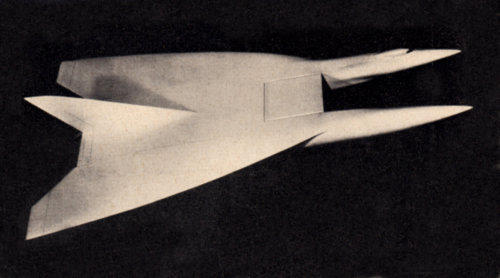

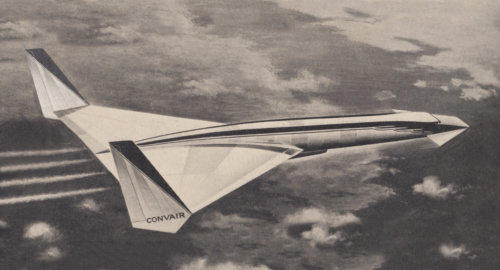
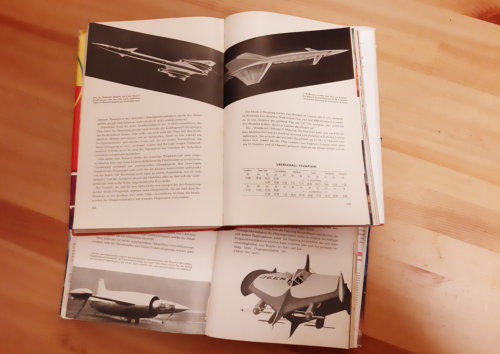

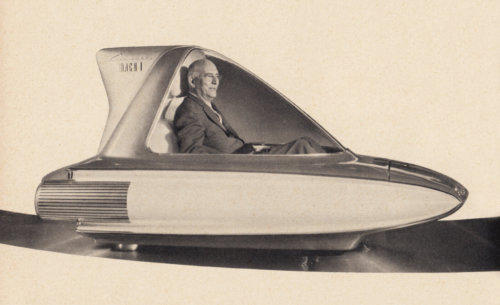
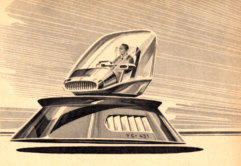
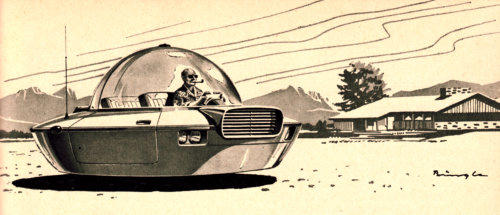
Convair designed this Mach 3 to Mach 5 aircraft. First flight was expected for 1970.
Continental Airlines promised to fly 80 passengers in 90 minutes from New York
to Los Angeles in 1980.
A very unique design from the United Kingdom. Bristol Siddeley proposed
this Mach 3 trans-atlantic airliner for 130 Passengers. Take-off-mass
would be 135 tons.
In 1980 not only air transportion would be completely new, but also street
traffic with hover cars.
“Levacar Mach I” was a design by Ford for a computer guided fast single-
seat hover car. The car would orientate itself following flat rails.

Post 043
Soviet/Russian Space Shuttle “Buran”
damaged by graffiti
A friend sent me shocking photos of the stored Russian space shuttle
"Buran" damaged by graffiti from the internet page
www.thedrive.com. This unique piece of space hardware was
demolished by people who can only be described as "idiots".
Hopefully there will soon be institutions or museums that will secure
these valuable spacecraft and make them accessible to the public.
The first and only flight of “Buran” was launched November 15th
1988. It was unmanned and after two revolutions performed an
automatic landing. The Russian shuttle program was terminated in
1993. The shuttle spacecraft in different stages of production were
stored in the production and maintenace building in Baikonur. The
flown first prototype was destroyed whan a part of the roof collapsed
in May 2002.

Posted by Uwe W. Jack

Graffiti applied to the port side of a “Buran” in the hangar at Baikonur.
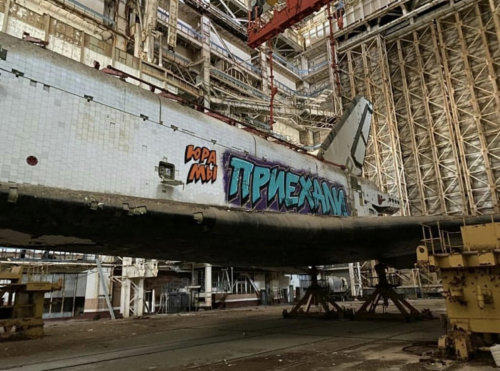
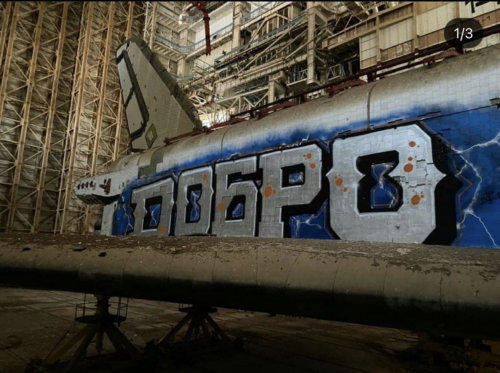
The damaged starboard side of a “Buran” in the hangar at Baikonur.

If you have not seen this Buran
brochure from Post 010, you can get it
here.
(click to see the brochure - the file may
not be modified - commercial use is
prohibited.)

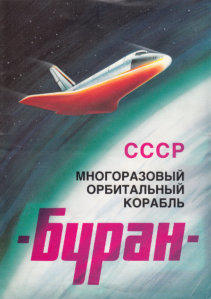
Post 044
The false Moon Rocket
Today I have a lot of documents on the German Rocket “Aggregat A4”
(V-2) in my archive. To achieve this, I searched museums and
archives for several decades and also spoke to eyewitnesses. But the
interest in this rocket only came about by accident.
When I was about 10 years old, I often passed a model shop. In the
shop window was a kit with a plastic model of a futuristic moon rocket.
The cover art was great! So I saved my pocket money for long weeks
and when it was enough I went to the store. But the box had
disappeared from the shop window and the shop manager said the
model had been sold two days ago. Sadly I asked about another
moon rocket. He handed me the Revell model of a V-2 rocket.
That much I already knew that no people would use it to fly to the
moon. But he argued that there were also figures in the box, so I
could play with them and pretend the figures are flying to the moon.
And as a bonus, he promised me a colorful catalog with all the
available models.
That was how he had convinced the little boy. I still have the catalog
and browse through the pages from time to time. The model has long
since disappeared, but the fascination with the A4 (V-2) rocket still
remaines.

Posted by Uwe W. Jack
This was what a boy dreamed of:
The Space Shuttle of the sixties,
a Project by Convair.

The Revell Catalog was printed circa 1960.
(click to see the Catalog)

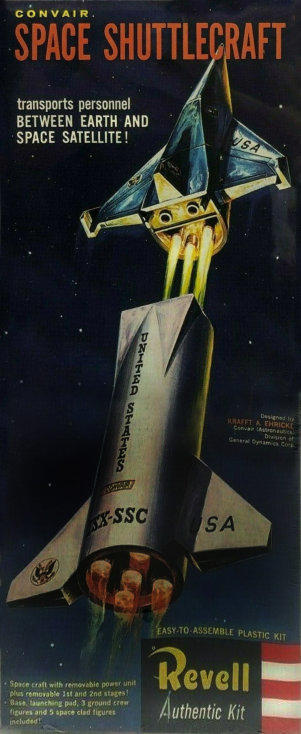
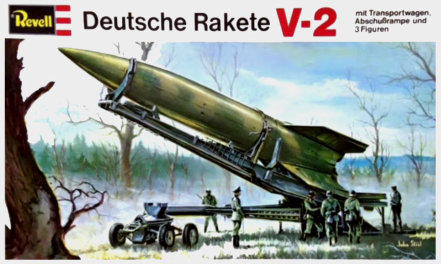
And this was what he gets instead:
No Flight to the Moon - but a lifelong
Passion!

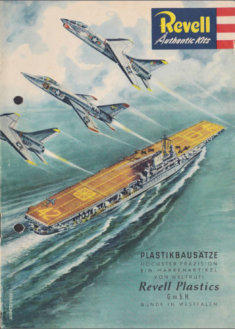
Post 045
A Jet-Factory hidden in the Forest
During World War II, my grandfather was sent from Berlin to Bavaria
to build the world's first jet fighter. From late 1944 to April 1945 he
worked in a forest near the city of Ulm. A production line for the
Messerschmitt Me 262 jet fighter was set up there in camouflaged
tents.
My grandfather worked in the final assembly of the jet. When an
airplane was finished, he would pat on the aircraft’s bow like one pats
a horse. Then the Me 262 were pulled to the edge of the forest for
engine testing and later took off from a nearby freeway for a test flight.
He said the planes were not camouflage-colored when they left the
forest factory.
Of course it was forbidden to take pictures in the factory. Therefore,
the only images showing such a forest factory are taken by US troops
after they captured the two factorys in late April 1945.

Posted by Uwe W. Jack
This still from a Luftwaffe training film
shows the towing of a Me 262
reconnaissance aircraft with ropes
attached to the main landing gear.
A Me 262 nearly finished in a forest
factory. The jet engines are not yet fitted.
(click to enlarge - the file may not be
modified - commercial use is prohibited.)

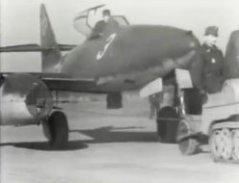

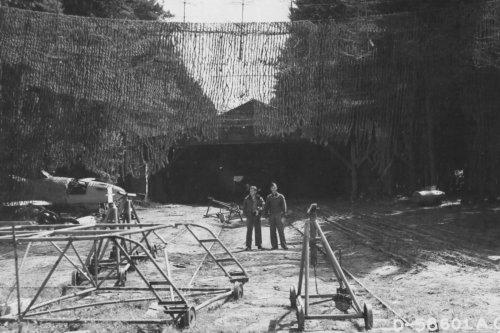
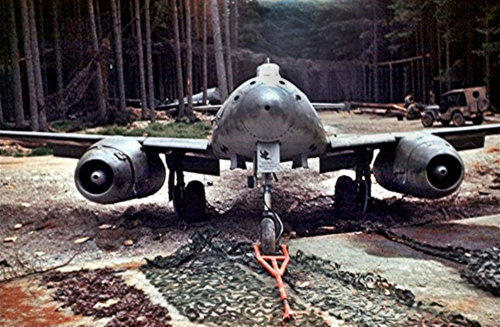





US soldiers at a sightseeing trip to the Messerschmitt forest factory. One tent is visible in
the background. (click to enlarge - the file may not be modified - commercial use is
prohibited.)
This color picture from a forest factory is still a mystery to me. The Me 262 s/n 111 755 has
fully painted upper sides - and more remarkable, painted under sides. This was forbidden from
end of February 1945 to save working hours and painting material. With the original set of
engines still fitted, this aircraft could be an operational Me 262 that may have been taken to
the factory for repairs.
Also interesting is the red device. Using this tow bar, the front gear often collapsed. So it was
only used to steer the front wheel. Two ropes attached to the main landing gear were used for
towing.
You will find the two original documents with the instructions for painting and towing a Me 262
in the document section, page 5.
(click to enlarge - the file may not be modified - commercial use is prohibited.)
The towing instruction for the
Me 262 from April 1944.
(click to jump to the
document section)










